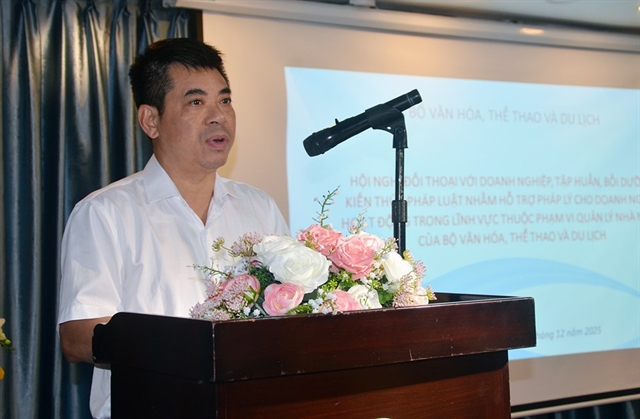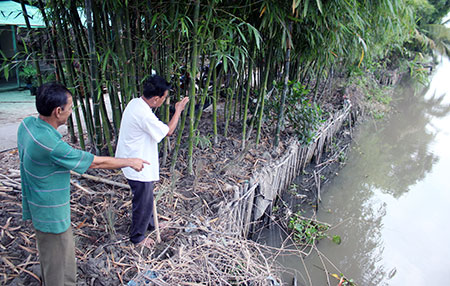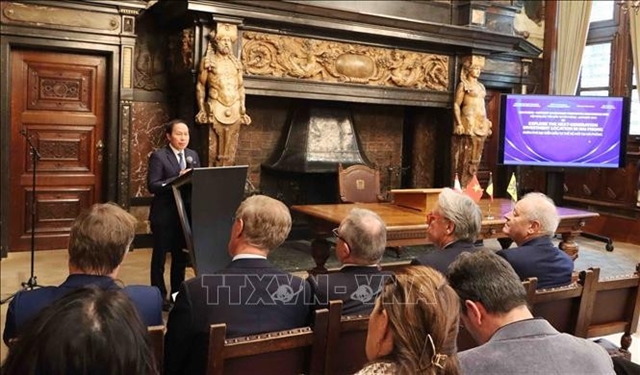 Society
Society


|
| An earthen embankment along the Xẻo Mơn Canal in Hậu Giang Province’s Phụng Hiệp District. — Photo baohaugiang.com.vn |
HẬU GIANG — Embankments made of natural materials to prevent erosion along rivers and canals have proved so effective in Hậu Giang that the province plans to expand the model.
Two years ago the Cửu Long (Mekong) Delta province’s Irrigation Sub-department built three such embankments running a total length of 380 metres in Phụng Hiệp District and Ngã Bảy Town on a trial basis.
They were made by filling eroded areas with soil and erecting between them and the water a barrier made from cajuput trunks or bamboo. Permeable fabric or fine nets were installed outside the barrier to hold the soil.
The barriers also cushion the banks from ripples and waves caused by travelling boats.
Cajuput and other plants that grow in water were then planted inside the barriers so that their roots bind the soil against erosion.
They cost VNĐ350 million (US$15,000).
Their cost per metre was only VNĐ400,000 ($17) compared to VNĐ60 million ($2,580) for concrete embankments, according to the sub-department.
Besides, the trees planted in them generate an income of VNĐ700,000 – 900,000 ($30 - 38) per metre in three or four years’ time.
The province then built another 25 kilometres of similar embankments last year and 143 kilometres so far this year.
In Búng Tàu Town in Phụng Hiệp, some 100 households along the Búng Tàu and Ngang canals have built these embankments near their houses.
Cao Văn Bồi, who built a 30-metre embankment in front of his house in Búng Tàu’s Tân Phú A2 Hamlet, said many large boats traverse the canal, and without something to block them, the waves caused by the boats hit the canal banks and cause erosion.
“The embankment helps stabilise the bank.”
Besides cajuput, Bồi has also planted spotted mangroves in the embankment. He grows water hyacinth in the canal to absorb the energy of the waves until his plants grow large enough.
Trần Thanh Oai, chairman of the Búng Tàu Town People’s Committee, said locals have built 2,000 metres of embankment under the guidance of officials.
The cost is borne by the locals themselves in some places.
The town plans to build more embankments and also instruct residents in building them, Oai said.
Trần Thanh Toàn, head of the sub-department, said the embankments are a sustainable solution since they offer reliable protection and are cheap and environment-friendly.
Their use should be widely and regularly propagated to educate officials at all levels and the public, he said.
The province has a dense network of rivers and canals extending nearly 3,500 kilometres.
It has suffered from nearly 250 cases of erosion in the last five years, losing 25,000sq.m of land.
Trương Cảnh Tuyên, deputy chairman of the People’s Committee, said the province has also built concrete embankments, but their high cost is an inhibiting factor, he said.
The earthen embankment is an appropriate solution and the province would expand its use, he added. VNS




